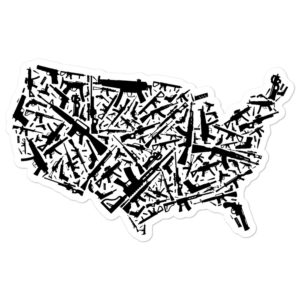While the majority of the Court ruled that the “The Second Amendment protects an individual right to possess a firearm unconnected with service in the militia,” and that individuals had the right to use that firearm “for traditionally lawful purposes, such as self-defense with the home,” four of the nine Justices disagreed.
As one might assume, for the most part, known political ideals divided the chamber. Two of the dissenting justices, Ruth Badar Ginsburg and Stephen Gerald Breyer were appointed by Democratic presidents. John P. Stevens and David Souter cast the other dissenting votes, and while Republic presidents appointed them, they both voted reliably with the courts liberal members. In fact, in 2003, a statistical analysis of voting patterns showed that Stevens had become the most liberal member of the court. Those Justices siding with Heller, were all appointed by a Republican president, and included John Roberts, Samuel Alito, Clarence Thomas, Anthony Kennedy, Antonin Scalia.
When Justice Scalia delivered his ruling opinion to the Court, which interpreted certain measures of the Second Amendment, he set out to make his reasoning clear, as it veered from previous Court decisions. First, he said that the original delegates that ratified the Second Amendment wrote it to be understood by the voters; its words and phrases were used in a normal and ordinary way; therefore, they exclude secret or technical meanings that would not have been known to ordinary citizens in the founding generation.
Next, Scalia declared that the framers of Second Amendment divided it into two parts. The first part secures the right of the people to a well-regulated militia. The second secures the right of the people to keep and bear arms. The two do not work in unison; they are separate ideas. The District of Columbia argued that the Second Amendment was one complete idea, stating that only members of a militia had the right to bear arms. Justice Scalia thwarted that notion even though it had Supreme Court case precedent. Scalia said that “The right of the people” refers to individual rights and belongs to all Americans. Third, he also clarified numerous terms found in the Second Amendment in order to clarify the phrase “keep and bear Arms”:
- According to two popular dictionaries of the era in which the delegates created the Constitution, “keep” meant “to retain, not to lose,” and “to have in custody,” as well as “to hold; to retain in one’s power or possession.”
- The dictionaries defined “bear” to mean “carry.”
- The word “Arms” meant “weapons of offence, or armor of defence” and “anything that man wears for his defence, or takes into his hands, or useth in wrath to cast at or strike another,”. Therefore, the term “Arms” is not specific to military use.
Therefore, “keep and bear arms” means to “have weapons in custody and carry for offence.” Finally, Scalia explained that just as modern forms of communication are included in the First Amendment, and modern forms of search are included in the Fourth Amendment, the Second Amendment extends “arms” to include all instruments that constitute modern forms of bearable arms, even those not in existence when the country’s Founding Fathers created the Amendment.
In McDonald v. City of Chicago (2010), a municipality denied the registration of a handgun to Mr. Otis McDonald, a law-abiding citizen, veteran, and Second Amendment advocate. Initially, the Court Of Appeals for the Seventh Circuit had upheld the ordinance which allowed Chicago to refuse all attempted handgun registrations since 1982 after a citywide handgun ban was passed. McDonald and other Chicago residents filed a lawsuit which ultimately became McDonald v. City of Chicago.
The same Supreme Court justices from District of Columbia v. Heller presided over the case, with the exception of newly appointed justice Sonia Sotomayor, a President Barrack Obama appointee. The Supreme Court found the local gun restriction law to be in violation of the Constitution by a 5-4 vote. Again, votes fell along the lines of known political ideals of liberalism and conservatism. This was a landmark decision because it guarantees that the Second Amendment applies to state and local governments as well as to the federal government.






